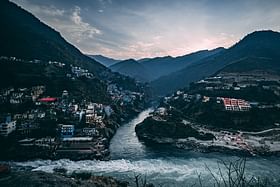A recent report by the Central Pollution Control Board (CPCB) showed that urban areas in West Bengal generate 5,457 million litres per day (MLD) of sewage.
However, only 16 per cent of these sewage volumes are treated — resulting in the discharge of untreated wastewater into rivers, lakes, and other water bodies.
Nitin Bassi, Programme Lead at the Council on Energy, Environment and Water (CEEW), suggested that adopting a comprehensive state-level wastewater treatment and reuse policy can help bridge this gap and improve river health, reports Times of India.
Bassi further added that the state-level policy should specify both discharge and reuse-specific treated wastewater quality standards in line with the National Framework on Safe Reuse of Treated Water guidelines.
According to a CEEW analysis, India’s urban centres will generate around 44,000 million cubic metres (MCM) of wastewater by 2050. Making critical investments in wastewater treatment is necessary for rejuvenating India’s polluted rivers.
To this end, the National Mission for Clean Ganga (NMCG) has taken steps towards cleaning Ganga, and this approach should be replicated for other polluted river stretches in India, Bassi said.
The ‘Namami Gange Programme’ is an integrated conservation mission, approved as a ‘Flagship Programme’ by the Union government in June 2014 with a budget of Rs 20,000 crore.
Through the mission, a wide range of interventions have been brought forward with a focus on cleaning the existing waste in the river stretches, while also introducing methods to reduce further degradation and pollution of the natural water resource.
This includes systems for wastewater treatment and solid waste management, with the aim of preventing any kind of untreated waste water being discharged into the river.
Recently, the 48th meeting of the Executive Committee of the National Mission for Clean Ganga (NMCG) was held. In this meeting, eight projects worth approximately Rs 638 crore were approved.
The approval included projects related to — river pollution abatement by development sewage treatment plants (STP), works for interception and diversion (I&D), redevelopment of ghats — along the Ganga river and its tributaries in regions of Uttar Pradesh, Bihar and Madhya Pradesh.


